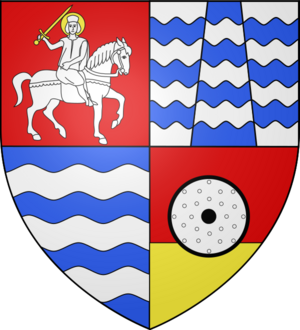Saint-Vulbas facts for kids
Saint-Vulbas is a small town, also called a commune, located in the eastern part of France. It is found in the Auvergne-Rhône-Alpes region and is part of the Ain department.
Contents
What is Saint-Vulbas?
Saint-Vulbas is a quiet and charming commune in the Ain department of France. It's known for its peaceful countryside and its location near the Rhône River. Communes like Saint-Vulbas are the smallest administrative areas in France, similar to a local town or village.
Where is Saint-Vulbas Located?
Saint-Vulbas is situated in the eastern part of France. It's part of the Auvergne-Rhône-Alpes region, which is known for its beautiful landscapes, including mountains, rivers, and forests. The Ain department, where Saint-Vulbas is found, is particularly famous for its natural beauty and outdoor activities.
The Rhône River and Its Importance
The Rhône River flows close to Saint-Vulbas. This river is one of the major rivers in France and Europe. It's important for many reasons, including providing water for farming, being a route for boats, and even generating electricity. The river helps shape the landscape and the way people live in areas like Saint-Vulbas.
Life in Saint-Vulbas
Life in Saint-Vulbas is generally calm and connected to nature. Many people who live there enjoy the quiet environment away from bigger cities. The commune has local services and facilities that support the community.
What Do People Do There?
People in Saint-Vulbas often work in local businesses, agriculture, or commute to nearby towns for jobs. The area is also popular for outdoor activities like walking, cycling, and enjoying the natural scenery.
Local Government and Community
Like all communes in France, Saint-Vulbas has its own local government, led by a mayor. This government helps manage local services, schools, and community events. It works to improve the daily lives of the residents.
History of Saint-Vulbas
The history of Saint-Vulbas, like many old towns in France, goes back many centuries. Over time, it has seen changes in its population and how people live and work. Learning about its history helps us understand how the commune has grown and developed into what it is today.
See also
 In Spanish: Saint-Vulbas para niños
In Spanish: Saint-Vulbas para niños


